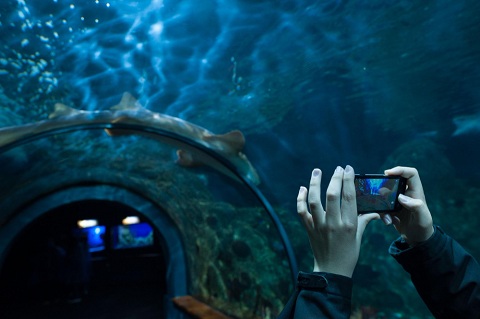Capturing the beauty of the underwater world through photography is a thrilling and rewarding experience. Whether you’re a seasoned underwater photographer or a beginner looking to explore this captivating realm, having the right tools and techniques is essential. One of the key tools for underwater photography is an underwater camera, specially designed to withstand the challenges of aquatic environments and capture stunning images beneath the surface. In this article, we’ll share valuable tips and techniques to help you master seascape photography using an underwater camera.
1. Choose the Right Equipment
Before diving into underwater photography, it’s crucial to select the right equipment, starting with an appropriate underwater camera. There are various types of underwater cameras available, including compact point-and-shoot cameras, mirrorless cameras, and DSLRs housed in waterproof casings. Consider factors such as image quality, depth rating, size, and budget when choosing your camera. Additionally, invest in quality underwater lenses suited for capturing wide-angle shots, which are ideal for seascape photography to capture the expansive underwater vistas.
2. Master Underwater Lighting
Lighting plays a pivotal role in underwater photography, significantly influencing the color and clarity of your images. In the underwater environment, natural light diminishes with depth, resulting in color loss and reduced contrast. To counteract these effects, consider using artificial lighting sources such as strobes or underwater LED lights. Position your lights strategically to illuminate your subject evenly and avoid harsh shadows or overexposure. Experiment with different lighting angles and intensities to achieve the desired underwater ambiance and enhance the visual appeal of your seascape images.
3. Understand Water Conditions
Water clarity and visibility greatly impact underwater photography. Choose locations with clear water and good visibility for optimal results. Factors such as currents, tides, and weather conditions can also affect your shooting conditions underwater. Plan your dives or photo sessions accordingly, taking into account the best times for visibility and minimising potential hazards. Understanding the underwater environment will help you anticipate challenges and make necessary adjustments to capture stunning seascape images.
4. Master Buoyancy and Stability
Achieving stable and steady shots underwater requires mastering buoyancy control and stability techniques. Proper buoyancy control not only enhances your safety but also allows you to maneuver smoothly and position yourself for the best camera angles. Practice neutral buoyancy to float effortlessly without sinking or floating to the surface. Use buoyancy aids such as buoyancy control devices (BCDs) or underwater floats to help maintain stability while composing your shots. Stable positioning is crucial for capturing sharp and clear images without motion blur or distortion.
5. Experiment with Composition
Composition plays a vital role in creating visually compelling seascape images. Experiment with different composition techniques such as the rule of thirds, leading lines, and framing to add depth and interest to your underwater shots. Incorporate elements like corals, rock formations, marine life, and human divers to create dynamic and engaging compositions. Pay attention to the foreground, midground, and background elements to create a sense of depth and scale in your underwater photographs.
6. Adjust White Balance and Color Correction
Underwater photography often faces challenges related to color accuracy due to the absorption and scattering of light in water. Use custom white balance settings on your camera or manual white balance adjustments to correct color casts and restore natural colors underwater. Additionally, consider using color correction filters or post-processing software to fine-tune color balance and enhance the vibrancy of your seascape images. Experiment with different color profiles and settings to achieve the desired visual aesthetics while maintaining natural-looking underwater colors.
7. Practice Patience and Persistence
Mastering underwater photography, especially seascape photography, requires patience, practice, and persistence. Explore different underwater environments, dive sites, and marine ecosystems to expand your photography portfolio and gain diverse experiences. Take the time to observe marine life behavior, underwater landscapes, and lighting conditions to capture unique moments and compositions. Be prepared for unexpected opportunities and stay adaptable to make the most of your underwater photography adventures.
Conclusion
Seascape photography using an underwater camera offers a fascinating journey into the mesmerising world beneath the waves. By choosing the right equipment, mastering lighting techniques, understanding water conditions, honing buoyancy control, experimenting with composition, adjusting white balance, and practicing patience, you can elevate your underwater photography skills and capture breathtaking seascape images. Whether you’re exploring coral reefs, underwater caves, or coastal seascapes, each dive presents new opportunities to unleash your creativity and capture the beauty of the seascape with your underwater camera.
